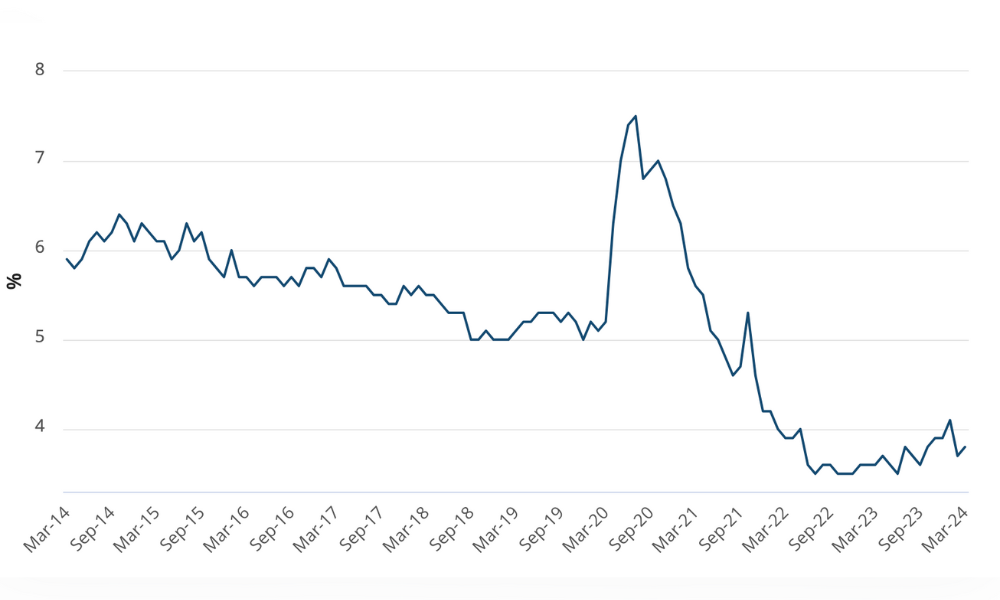We look at the advantages and disadvantages of using this technique and its impact on productivity

The Pomodoro technique is one of the most popular time management methods for people to stay focused and get work done – and smart employers can use the technique to promote and encourage productivity for both in-office and remote workers.
Below, we define the Pomodoro technique and look at why you should encourage employees to use it at work.
Read more: How to manage staff’s work-life balance challenges
What is the Pomodoro technique?
Productivity consultant Francesco Cirillo invented the Pomodoro technique in the 1980s, naming it after the tomato-shaped kitchen timer he used to time his work during his university days.
The technique involves using a timer to divide workdays into multiple 25 minutes intervals that are separated by short breaks that are five minutes in length.
Using the Pomodoro technique
One great thing about the Pomodoro technique is that it’s easy to pick up and learn.
- Pick one project or task you want to focus on
Before setting the timer, employees must set a goal or task to work on during the allotted time. It is best to list down steps needed to complete the task and determine which ones need to be prioritized and completed before others.
- Set the timer for 25 minutes of uninterrupted work
Once a goal has been set, start the timer for 25 minutes and work uninterrupted on the goal. This gives the employee a visible time set to work and get as much work done on a specific task without the distractions that can slow down the task’s completion.
People should not be afraid to experiment and see what time pattern works for them. Twenty-five minutes is the suggested Pomodoro session length for maximum results and was based on several different trials and experiments. Still, people can adjust it to 15 minutes of uninterrupted work if 25 minutes is too long, or 50 minutes with a 10-minute break if they prefer to work uninterrupted for a more extended period.
- Take a five-minute break to unwind
When the alarm rings, take a five-minute break to relax. Moving away from the desk and resting your eyes can help give a quick recharge before another round of uninterrupted work. People can also use the quick break to get a snack, reply to messages, check social media, or work email, and other activities to relieve stress.
- Repeat the process and adjust the technique to your needs
When the break is done, it is time to repeat the whole process again until all the tasks are complete. After four Pomodoro technique cycles, take a longer 20 to 30-minute break.
It is advisable to record how many intervals were used to complete each task and see whether adjusting the time periods can help productivity.
Benefits of using the Pomodoro technique in the workplace
There are various reasons why many use the Pomodoro technique when working, studying, or even running errands around the house:
- Manages distraction and time
One of the main reasons is how the technique helps people manage distractions and their time. A study led by the University of Illinois psychology professor Alejandro Lleras discovered that short breaks taken in between main projects can cause a significant improvement in one’s ability to keep focused on a task – a finding that supports the goal of the Pomodoro technique.
- Creates a sense of urgency
The Pomodoro technique cultivates a sense of urgency because knowing there is a timer counting down can help employees focus on the task at hand and finish it before the timer ends. This, in turn, builds higher levels of will-power and concentration.
- Increases accountability
Listing down all tasks and marking down the ones that have been finished gives employees a sense of accountability. It helps them see what else needs to be done and enables management to track their progress accurately.
- Maintains motivation
The technique is useful when an employee is easily distracted and has difficulty focusing on the task at hand. Because it demands people focus on set tasks during a set time, the technique helps people stay motivated in achieving their goals.
It also works for people who have a lot of repetitive work to get through, such as writing, coding, and organizing data. One Pomodoro interval is long enough to progress in a task’s completion but not long enough that it feels overwhelming and tedious.
Disadvantages of the Pomodoro Technique in the workplace
Despite its benefits, the Pomodoro technique has several disadvantages that can cause productivity to actually decrease for some people.
- Scheduling meetings can be difficult
The technique works great if there are minimal interactions with other colleagues – but it can be hard to stay dedicated to the technique when there are unscheduled meetings and calls throughout the day.
Temporarily pausing the timer during these meetings and restarting the timer afterward is one way to manage impromptu meetings. Employees can also plot out scheduled meetings during their Pomodoro intervals. For example, a person can work in an hour-long online meeting at an uninterrupted Pomodoro interval followed by a quick break before returning to their regular Pomodoro schedule.
- The timer can interrupt focus
The Pomodoro technique’s timer is a great way to motivate people to continuously work on a certain task they most likely have trouble staying focused on. But the timer can break a person’s focus if it goes just as they start to get a good flow of focus and motivation to work. And unfortunately, it usually takes a while to get back into that zone for the next interval.
The best way to avoid interruptions is to adjust the time to best suit the person’s working conditions. Observing how long it takes to finish a task and how quickly they focus can help people identify how long or short the Pomodoro intervals should be. People should understand that the timer is there to help focus on a task and is flexible enough to fit the working habits of the person.
- The Pomodoro technique can get stressful
The technique can be a difficult time management method to get used to for people who aren’t used to the urgency and hyperfocus it demands. It can even be too much for some people and consequently lead to lower productivity.
A good way to approach this is to encourage people to use the Pomodoro technique in moderation. In addition, people should remember that the Pomodoro technique is there to assist people in working better and not a strict method that needs to be followed for every task.
Read more: Are you ‘working from home’ or ‘living at work’?
When implemented properly, the Pomodoro technique can significantly improve employees' focus and help them reach goals faster and more efficiently. However, employers are ultimately responsible for making sure employees are taken care of and are constantly learning and developing. Encouraging employees to try the Pomodoro technique can be a great way to help them improve their working habits and see better output that benefits the company and the clients they serve.








